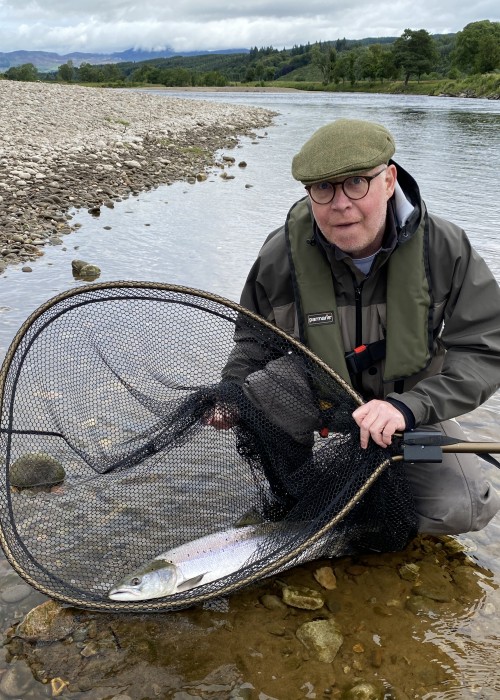
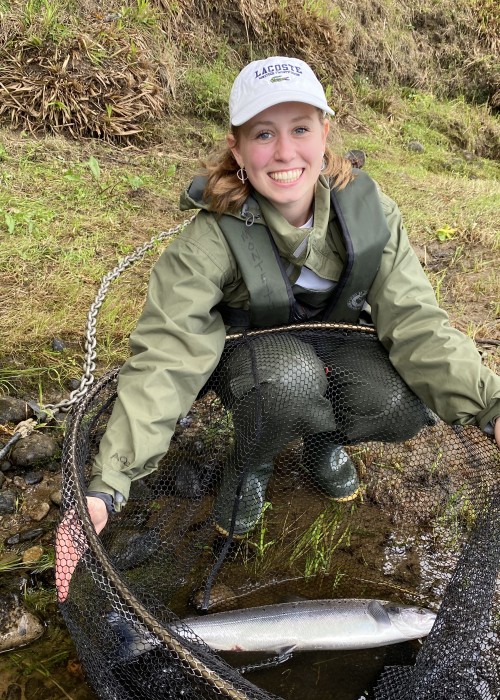
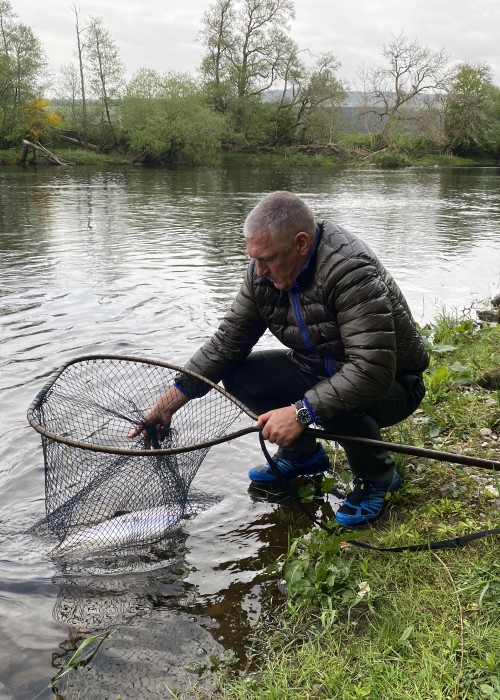
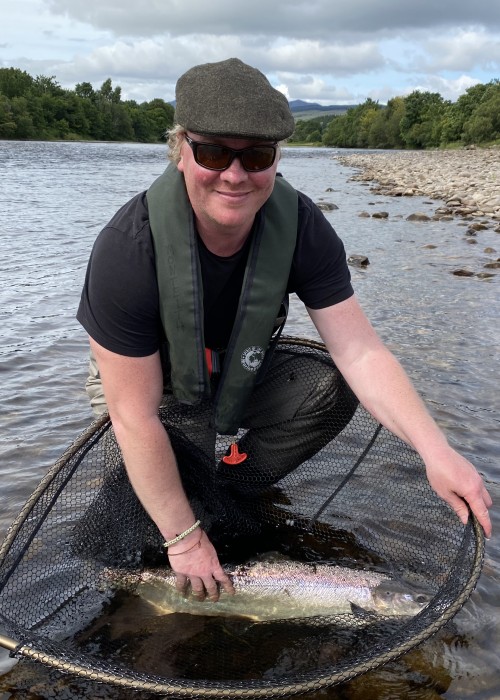
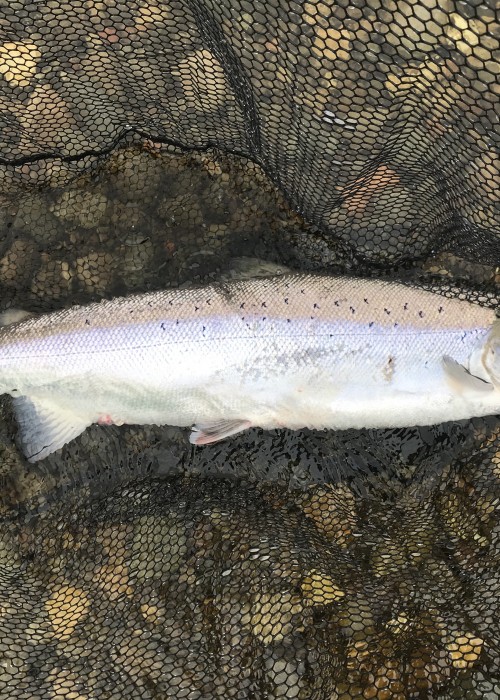
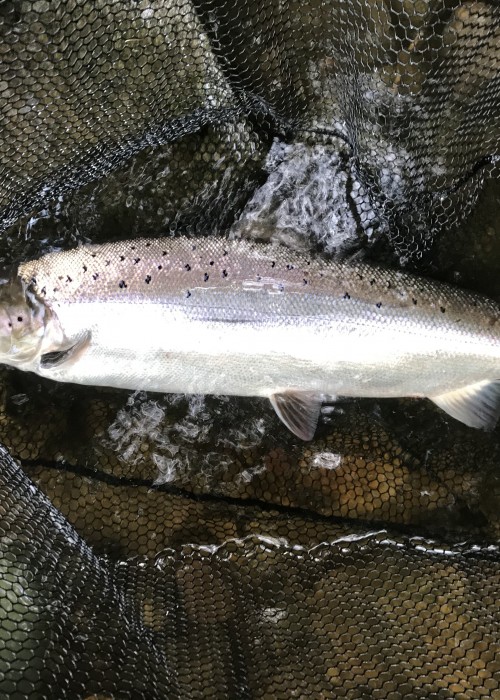
Information on how to properly unhook and release a Scottish salmon with conservation of future salmon stock levels in mind.
When unhooking a salmon minimal contact with the fish is recommended and forceps should always be used for a swift hook extraction. Once your salmon is unhooked keep the fish in the landing net if possible and take a few good 'in frame' shots of the salmon. There’s immense natural beauty in all wild Atlantic salmon so capturing a good quality shot of the fish is always a nice thing to do and provides a great memory. If you’re fishing with a colleague have him take a few shots of you with the salmon also capturing the salmon pool in the background (where the fish was hooked) which should also be a consideration to enhance the memory of your capture. If keeping your fish in the landing net for a photograph you can hold the landing net mesh and tighten it then lift the fish up to the waterline so that the salmon's flanks are facing the camera. If you're fishing alone take a nice shot of the salmon lying flat in the landing net. In all cases make sure your camera lens is clean for a sharp quality shot of your salmon and taking a couple dozen shots ensures a great one was achieved.
After you’ve unhooked and taken enough photographs keep the salmon in the landing net and walk the fish into some deeper water where there’s a steady flow and give the fish a few minutes to regain its composure after the stress of being captured. Your landing net should always have a fine soft or rubber coated mesh as this type of mesh bag does no harm to the fish unlike the wider mesh bag designs which should be banned with ‘Catch & Release’ in mind as these types of mesh bags will often cause damage to the salmon fins. Minamalise handling the salmon if you can however if you have to remove the fish from the net to assist in its revival then do so with sub surface wet hands and never dry hands which could damage the salmon’s protective mucus membrane coating. Booking a professional salmon guide will teach you these skills and many others.
When the salmon is ready to be released you'll feel it start to flex and kick so don't hang onto the fish for longer than necessary. There's no need to pull the fish back and forward in the stream or twist the fish from the tail during recovery stage as these serve no real purpose. If your salmon recovery strategy thoughts have been sufficient and you've placed the fish in a good steady stream to assist in its revival then it shouldn't take too long for the fish to recover. If you're releasing the salmon directly from the landing net then the fish will swim directly out of the net when you fully dip the rim of the net below the waterline.
There's huge personal satisfaction in releasing a wild Atlantic salmon that's just given you one of the best thrills you can experience in any sport. Not only is 'catch & release' satisfying but it's a very good practise for anglers who wish to play their part for future salmon stocks. While there are many arguments against catch & release these tend to be from the minority of anglers who've missed the point that dead salmon don't reproduce and thankfully most fishers are happy to release their salmon. The buzz of catching a perfect wild Atlantic salmon on a fly rod is special but even more special is that you've not ended that survival specialist's gene pool and set it free to reproduce as the majority of 'released' salmon will go on to do.